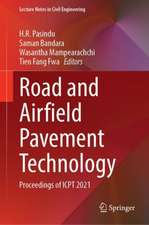Engineering Rock Mass Classification: Tunnelling, Foundations and Landslides
Autor R K Goel, Bhawani Singhen Limba Engleză Paperback – 18 aug 2016
Rock mass classification is an essential element of feasibility studies for any near surface construction project prior to any excavation or disturbances made to earth. Written by an author team with over 50 years of experience in some of the most difficult mining regions of the world, Civil Engineering Rock Mass Classification: Tunnelling, Foundations and Landsides provides construction engineers, construction managers and mining engineers with the tools and methods to gather geotechnical data, either from rock cuts, drifts or core, and process the information for subsequent analysis. The goal is to use effective mapping techniques to obtain data can be used as input for any of the established rock classification systems. The book covers all of the commonly used classification methods including: Barton’s Q and Q’ systems, Bieniawski’s RMR, Laubscher’s MRMR and Hoek’s and GSI systems. With this book in hand, engineers will be able to gather geotechnical data, either from rock cuts, drifts or core, and process the information for subsequent analysis. Rich with international case studies and worked out equations, the focus of the book is on the practical gathering information for purposes of analysis and design.
- Identify the most significant parameters influencing the behaviour of a rock mass
- Divide a particular rock mass formulation into groups of similar behaviour, rock mass classes of varying quality
- Provide a basis of understanding the characteristics of each rock mass class
- Relate the experience of rock conditions at one site to the conditions and experience encountered at others
- Derive quantitative data and guidelines for engineering design
- Provide common basis for communication between engineers and geologists
Preț: 397.51 lei
Preț vechi: 432.08 lei
-8% Nou
Puncte Express: 596
Preț estimativ în valută:
76.08€ • 79.13$ • 63.76£
76.08€ • 79.13$ • 63.76£
Carte tipărită la comandă
Livrare economică 06-20 martie
Preluare comenzi: 021 569.72.76
Specificații
ISBN-13: 9780128103647
ISBN-10: 0128103647
Pagini: 384
Dimensiuni: 152 x 229 x 20 mm
Greutate: 0.61 kg
Editura: ELSEVIER SCIENCE
ISBN-10: 0128103647
Pagini: 384
Dimensiuni: 152 x 229 x 20 mm
Greutate: 0.61 kg
Editura: ELSEVIER SCIENCE
Cuprins
Chapter 1: Quantitative Classifications. Chapter 2: Shear Zone Treatment in Tunnels and Foundations. Chapter 3: Rock Material. Chapter 4: Rock Quality Designation. Chapter 5: Terzaghi's Rock Load Theory. Chapter 6: Rock Mass Rating (RMR). Chapter 7: Prediction of Ground Conditions for Tunnelling. Chapter 8: Rock Mass Quality (Q) - System. Chapter 9: Rock Mass Number. Chapter 10: Rock Mass Index. Chapter 11: Rate of Tunnelling. Chapter 12: Support System in Caverns. Chapter 13: Strength Enhancement of Rock Mass in Tunnels. Chapter 14: Strength of Discontinuities. Chapter 15: Shear Strength of Rock Masses in Slopes. Chapter 16: Types of Rock Slope Failures. Chapter 17: Slope Mass Rating (SMR). Chapter 18: Allowable Bearing Pressure for Building Foundations. Chapter 19: Method of Excavation. Chapter 20: Rock Drillability. Chapter 21: Permeability and Groutability. Chapter 22: Gouge Material. Chapter 23: Engineering Properties of Hard Rock Masses. Chapter 24: Geological Strength Index (GSI). Chapter 25: Evaluation of Critical Rock Parameters. Chapter: 26: In situ Stresses




















